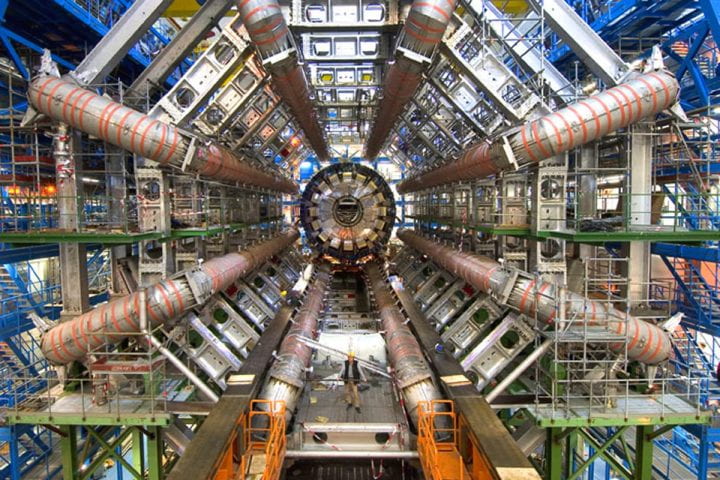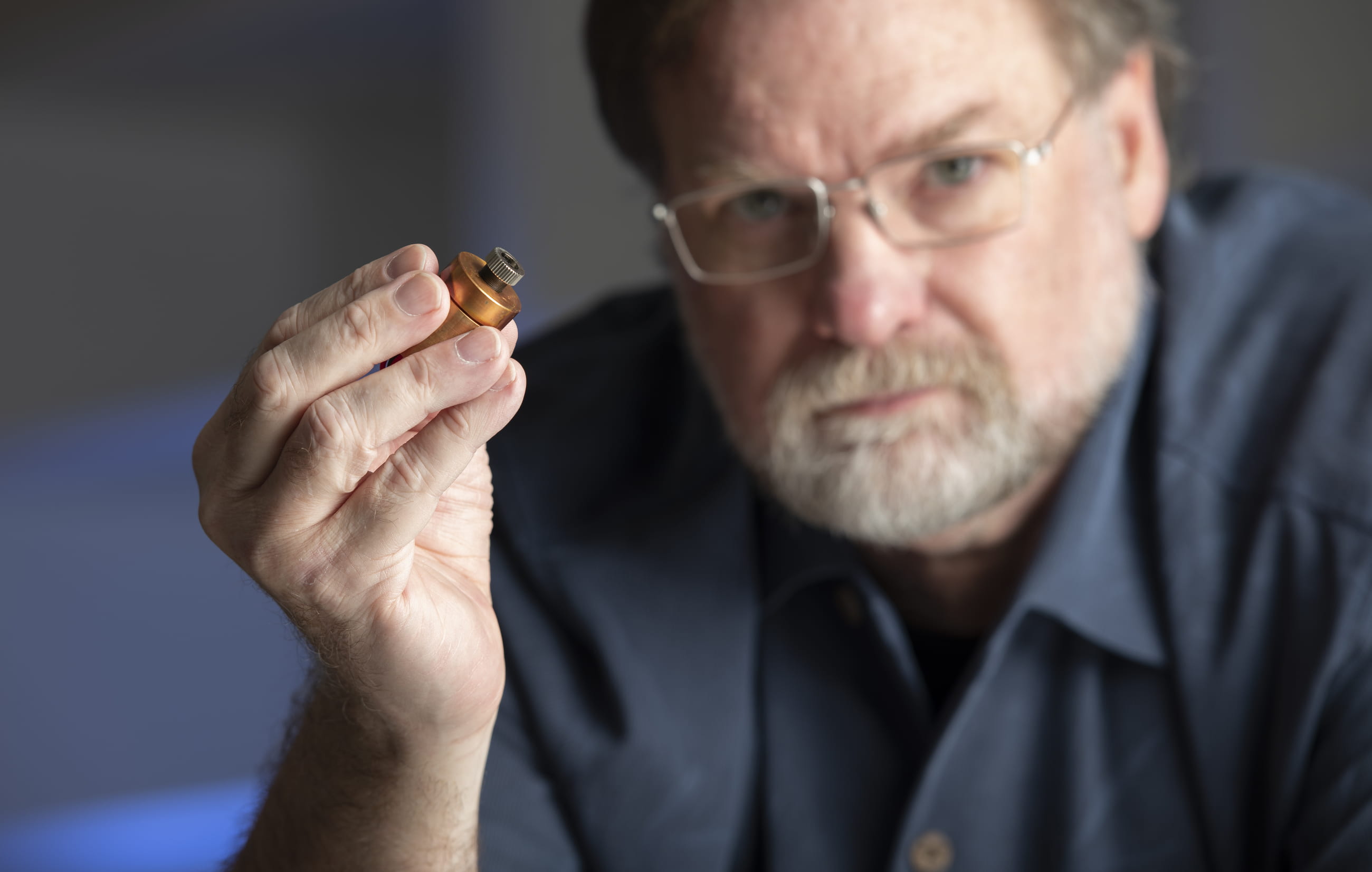A matter of great importance
UCI physicists have played a key role in the search for the elusive Higgs boson.

Is it or isn’t it?
That’s the big question in the world of physics after scientists working with the Large Hadron Collider in Switzerland announced July 4 the discovery of a new particle that matches the properties of the elusive Higgs boson — a subatomic particle long theorized but never seen that’s considered key to understanding the existence of all mass in the universe.
UC Irvine researchers have played an important role in the hunt for this so-called “God particle.” Andrew Lankford, UCI professor of physics & astronomy, is deputy director of the ATLAS experiment, one of the LHC’s four particle detectors. He’s joined by seven other UCI faculty members, numerous postdoctoral researchers and staff at the famous Geneva laboratory built by the European Organization for Nuclear Research (CERN).
It was one of the most significant physics announcements in decades. The results are preliminary, the CERN team noted, and a more complete picture will emerge later this year after the LHC provides more data.
“If the new particle is determined to be the Higgs, attention will turn to a new set of important questions,” said Lankford. “Is this a standard-model Higgs, or is it a variant that indicates new physics and other new particles? Discovery of the Higgs — or another new particle — would represent only the first step into a new realm of understanding the world around us.”


